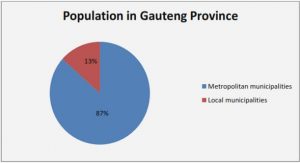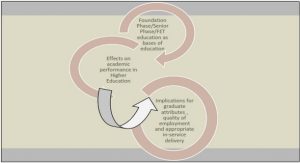Get Complete Project Material File(s) Now! »
Positioning: Narrative practical theology
Since practical theology has been studied in the mode of an unfathomable revolution for about 200 years, it is no longer the so-called applied discipline, which is constituted and operated by classical disciplines of systematic theology, biblical theology, church history, and ethics (Fowler 1999:75). Rather, practical theology constructs and spells out theological understanding. Practical theology is a praxis-based discipline. The word praxis means “action.” However, it is a special form of action. Whereas practice entails the simple “non-reflective performance” in a network of relations, praxis implies reflection because its focus is on achieving a particular end of such action (Swinton 2000:10-11). According to Browning (1983:13), “the difference between practice and praxis is that in the latter the theory has been made self-conscious and reflected upon critically.”
When practical theology is engaged in praxis, it reflects on intentional action strategies, which are aimed at transforming social contexts. Practical theology claims to point towards a concrete contextual concept. “It is always local, concrete, and specific,” with real stories and real lives (Müller 2004:20). From such contexts of praxis, practical theological method starts. Practical theology begins and ends in praxis and all praxis is theory-laden. It develops reflections out of the context of ongoing practices in which communities of faith engage. It arises out of practices and returns to practices, which enables the modification of the adequacy and faithfulness of the practice that it initiates (Fowler 1999:84). This is to say, it epitomises a practice-theory-practice model that brings about a complete practical cast to the entire theological enterprise.
The Korean War (1950-1952)
In June 1950, South Korea was attacked by the armed forces of North Korea. It was the beginning of the Korean War, which lasted from 1950 to 1952 and resulted in the partitioning of the peninsula and which grew out of the ideological conflict between North and South Korea. In South Korea, the war left some 230,000 wounded, 300,000 permanently handicapped, and 100,000 orphaned, as well as one million tuberculosis cases. Exact records for North Korean casualties are not available, but they would probably be similar to those of South Korea (Kim 1988:3). War resulted in the devastation of all industry over the entire peninsula. The worth of destroyed buildings and capital goods was nearly the same as the total 1953 Gross National Product (GNP). Economic and export growth were clearly disappointing, in addition to the chaotic state of the manufacturing sector (Moreira 1995:32-33). Every Korean person struggled in severely destitute situations resulting from the war. Furthermore, an estimated five million people were separated from their families during the course of the war (Kim 1988:3-4).
The problem of the separation of families has remained a critical issue up until the present day in Korea. Those who live in South Korea and North Korea respectively do not even communicate freely with one another. By July 1953, a truce agreement between South Korea and North Korea had been concluded and Korea has remained the only divided nation in the world for more than 50 years, while the two Koreas are still at war (Olk 2004:5). Moreover, in the Korean peninsula today, there is always the possibility of nuclear warfare from North Korea, which poses a serious threat to global security (Omestad 2004:133).
Filial piety
The most distinctive characteristic of the traditional Korean family was the hierarchical structure among the family members. In this rigid hierarchical system, the relationships between each family member were matters of much greater concern than emotional closeness. Among many family relationships, the father-son relationship was dominant in the traditional family system in that fathers were the main providers. Fathers valued their sons as an indispensable labour force and the only source of security in their later lives. Therefore, the father-son relationship was enormously important in the agricultural economic structure (Choi 2000:32-33).
Within an agrarian economic society, the significance of the nature of a fatherson relationship has taken the form of filial piety in the social order of the Korean society. The son, especially the eldest son of a family, is expected to live with his parents and grandparents to support them financially and emotionally until their death. Old age support, according to the value of filial piety, has brought about exclusive kinship systems for son-preference in Korea. Many Korean aged have lived with their adult children, especially their sons, because they have received full support from their sons. The support for the elderly would seem to be one of the most important reasons for the tendency of Korean people to prefer sons over daughters (Gupta et al 2002:15).
CHAPTER 1: INTRODUCTION
1.1 Problem and theme
1.2 Positioning : Narrative practical theology
1.3 Research methodology
1.4 Delimitations
1.5 Research outline
CHAPTER 2: FAMILY SUPPORT FOR THE ELDERLY IN KOREA
2.1 Introduction
2.2 The traditional elderly, families, and family support
2.3 Limitations of the family support system
2.4 The change of the image and status of the elderly
2.5 The change in family support, intergenerational conflicts, and loneliness of the elderly
2.6 Voices of the elderly: the empirical interpretation for their image, family support, and loneliness.
2.7 Summary
CHAPTER 3: CHRISTIAN AND HISTORICAL INTERPRETATION OF AN INTERGENERATIONAL RELATIONSHIP
3.1 Introduction
3.2 Christian interpretation
3.3 Historical interpretation of the conflict of intergenerational relationship in Korean society
3.4 Summary
CHAPTER 4: THE CHURCH’S TASK TO RESOLVE INTERGENERATIONAL CONFLICT: FOCUSING ON THE CHURCH ROUND TABLE
4.1 Introduction
4.2 The Church’s role in creating intergenerational communication with open dialogue
4.3 The Round Table as alternative communicability
4.4 Three key issues of the Church Round Table for intergenerational conflict
4.5 Summary
CHAPTER 5: THE CHURCH ROUND TABLE’S PRACTICAL STRATEGIES FOR RESOLVING INTERGENRATIONAL CONFLICT
5.1 Introduction
5.2 The six stages of open dialogic praxis in the Church Round Table
5.3 Case study
5.4 A culture of multiplication of the Church Round Table
5.5 Summary
CHAPTER 6: CONCLUSION
6.1 Summary and reflection
6.2 Recommendations for further study






